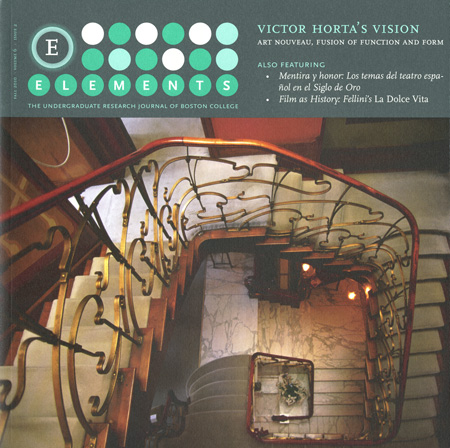Victor Horta's Vision: Art Nouveau, Fusion of Function and Form
DOI:
https://doi.org/10.6017/eurj.v6i2.9031Keywords:
Fall 2010, humanities, art historyAbstract
Working at the turn of the century, the Belgian Victor Horta was one of the art nouveau's premiere architects and designers. The goals of his work are realized most successfully in the townhouses he created. Practicality and the aesthetics blend seamlessly together, resulting in buildings simultaneously revolutionary in their innovation and classical in their emphasis on harmony and order. As characteristic of art nouveau, the first self-consciously modern style of architecture, Horta stressed organic forms in design as well as structure. He counterbalanced the inherently static and rigid nature of the edifice with natural, curving shapes to render the home more appealing to its residents. Furthermore, Horta and his clients saw their association with art nouveau as a reflection of their ultra-liberal, progressive political views. In many ways, Victor Horta's work represents the pinnacle of art nouveau, not simply in its rejection of architectural conventions and its emphasis on integration, but also in its respect for the merit of classical works. This concurrence is at the heart of Victor Horta's success.Downloads
Published
2010-11-10
How to Cite
Swofford, K. (2010). Victor Horta’s Vision: Art Nouveau, Fusion of Function and Form. Elements, 6(2). https://doi.org/10.6017/eurj.v6i2.9031
Issue
Section
Articles
License
Copyright (c) 2015 Elements

This work is licensed under a Creative Commons Attribution 4.0 International License.

